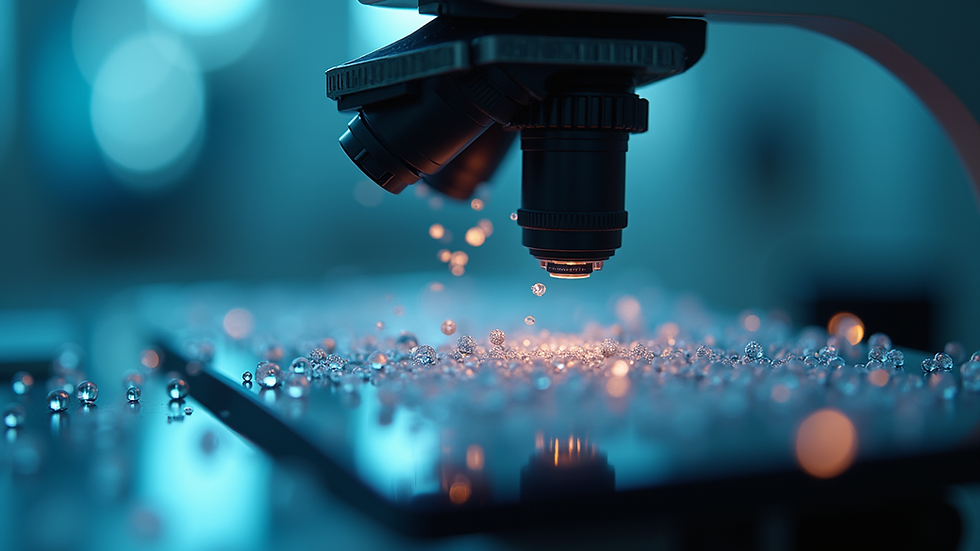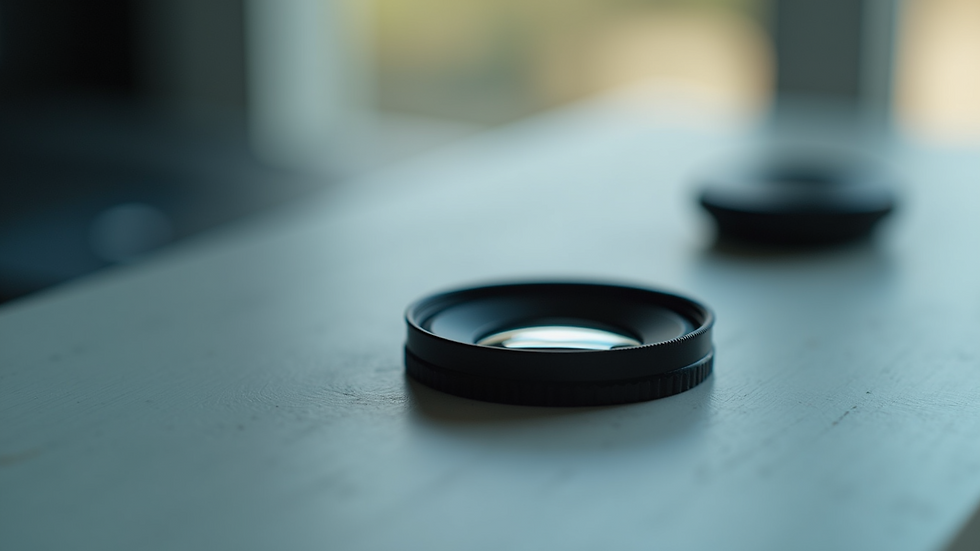Exploring Innovative Nanotechnology Approaches to Enhance Vision Health
- Gifted Gabber

- Aug 4
- 3 min read
Vision is one of our most vital senses, allowing us to interact with the world around us. Unfortunately, more than 2.2 billion people worldwide experience vision impairment or blindness, highlighting an urgent need for innovative solutions. Enter nanotechnology—an area of research that is beginning to transform how we understand and treat vision issues. This blog post delves into the exciting intersection of nanotechnology and vision health, showcasing specific applications that promise to enhance our capacity to see clearly.
What is Nanotechnology?
Nanotechnology refers to the manipulation of matter on an atomic or molecular scale, generally at dimensions smaller than 100 nanometers. At this tiny scale, materials exhibit unique properties that differ from their larger counterparts.
In the realm of vision health, nanotechnology has the potential to improve diagnostic methods, deliver targeted therapies, and create advanced vision correction tools that can seamlessly integrate with biological systems.
Nanoparticles in Eye Treatments
Nanoparticles are incredibly small particles that can easily penetrate biological barriers, making them ideal for drug delivery systems. These tiny particles can be tailored to carry medications directly to specific tissues in the eye, enhancing the effectiveness of treatments for conditions such as age-related macular degeneration (AMD) and diabetic retinopathy.
Recent studies show that lipid-based nanoparticles can encapsulate medications like anti-VEGF (vascular endothelial growth factor) agents. This targeted delivery can enhance the drug’s action while minimizing side effects. For instance, using nanoparticles can potentially reduce the frequency of injections required for AMD treatments from every month to every three months, improving patient comfort and adherence.

Nanostructured Biomaterials for Corneal Regeneration
Another promising area of research is using nanostructured biomaterials for corneal regeneration. The cornea is crucial for focusing light, and damage to this area can severely impair vision.
Researchers are developing nanofibrous scaffolds that closely mimic the natural extracellular matrix of the cornea. These innovative scaffolds not only support cell growth but have demonstrated improved adherence and proliferation rates. In laboratory settings, cells grown on these nanostructured surfaces show a 50% increase in growth rates compared to conventional methods, making them a potent solution for corneal repair.
Smart Contact Lenses
The integration of nanotechnology into smart contact lenses represents a groundbreaking shift in vision care. These lenses incorporate nanosensors capable of monitoring intraocular pressure, temperature, and even glucose levels in tears.
Such advancements pave the way for personalized eye care. For instance, imagine wearing a contact lens that alerts you when your intraocular pressure spikes, helping you detect potential glaucoma risks earlier. The concept of smart contact lenses goes beyond correcting refractive errors—these lenses could someday track your overall eye health.

Nano-Optics in Vision Correction
Nanotechnology is revolutionizing optics by developing nanostructured lenses that modify how light focuses in the eye. These innovative materials have the potential to create thinner, lightweight lenses while maintaining excellent vision quality.
Researchers are exploring adaptive lenses made with nanomaterials that automatically adjust their refractive index based on surrounding light conditions. This technology could provide seamless transitions from bright to dim lighting without the need for multiple pairs of glasses.
Early Detection through Nanotech Imaging
Early detection is crucial for maintaining eye health, particularly for diseases like glaucoma and diabetic retinopathy. Traditional imaging techniques can overlook subtle changes, but advancements in nanotechnology offer a new dimension to eye care.
Nano-imaging techniques focus on precision at the molecular level, significantly enhancing the ability to visualize minute changes in the eye’s structure. For example, with nano-imaging, doctors can detect early signs of retinal damage a full six months earlier than with standard imaging techniques. This capability leads to quicker diagnoses and better preventative strategies against vision loss.
The Future of Vision Health with Nanotechnology
Exploring nanotechnology promises tremendous possibilities for enhancing vision health. However, challenges remain, including regulatory hurdles and ensuring these innovations are safe and effective for widespread use.
As researchers collaborate across disciplines and deepen our understanding of nanomaterials, we can anticipate exciting breakthroughs that will redefine how we approach vision issues.
A New Dawn for Vision Health
Nanotechnology represents a frontier of innovation in vision health, offering tiny solutions for significant challenges. From nanoparticles designed for direct drug delivery to smart contact lenses that actively monitor eye health, the potential applications are numerous and thrilling.
As research progresses and technology evolves, we can eagerly look forward to a future where improved vision is accessible to everyone. The combination of nanotechnology and optometry reflects the incredible potential of science in restoring and enhancing one of our most precious senses. With these innovative approaches, we can envision a world where enhanced vision health is not just a hope, but a tangible reality.



Comments